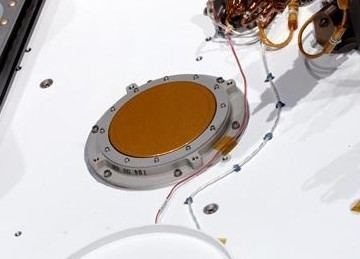 | ||
The Radiation Assessment Detector (RAD) is an instrument mounted on the Mars Science Laboratory's Curiosity rover. It was the first of ten instruments to be turned on during the mission.
Contents
Purpose
The first role of RAD was to characterize the broad spectrum of radiation environment found inside the spacecraft during the cruise phase. These measurements have never been done before from the inside of a spacecraft in interplanetary space. Its primary purpose is to determine the viability and shielding needs for potential human travelers on a manned mission to Mars, as well as to characterize the radiation environment on the surface of Mars, which it started doing immediately after MSL landed in August 2012. Turned on after launch, the RAD recorded several radiation spikes caused by the Sun.
RAD is funded by the Exploration Systems Mission Directorate at NASA Headquarters and Germany's Space Agency (DLR), and developed by the Southwest Research Institute (SwRI) and the extraterrestrial physics group at Christian-Albrechts-Universität zu Kiel, Germany.
On 31 May 2013, NASA scientists reported the results obtained during cruise, and stated that the equivalent dose radiation for even the shortest round-trip with current propulsion systems and comparable shielding is found to be 6999660000000000000♠0.66±0.12 sievert. This implies a great health risk caused by energetic particle radiation for any manned mission to Mars.
Astrobiology
The radiation sources that are of concern for human health also affect microbial survival as well as the preservation of organic chemicals and biomolecules. The RAD is currently quantifying the flux of biologically hazardous radiation at the surface of Mars today, and will help determine how these fluxes vary on diurnal, seasonal, solar cycle and episodic (flare, storm) timescales. These measurements will allow calculations of the depth in rock or soil to which this flux, when integrated over long timescales, provides a lethal dose for known terrestrial microorganisms. Through such measurements, scientists can learn how deep below the surface life would have to be, or have been in the past, to be protected.
Research published in January 2014 of data from RAD, state that "ionizing radiation strongly influences chemical compositions and structures, especially for water, salts, and redox-sensitive components such as organic matter." The report concludes that the in situ "surface measurements —and subsurface estimates— constrain the preservation window for Martian organic matter following exhumation and exposure to ionizing radiation in the top few meters of the Martian surface.
